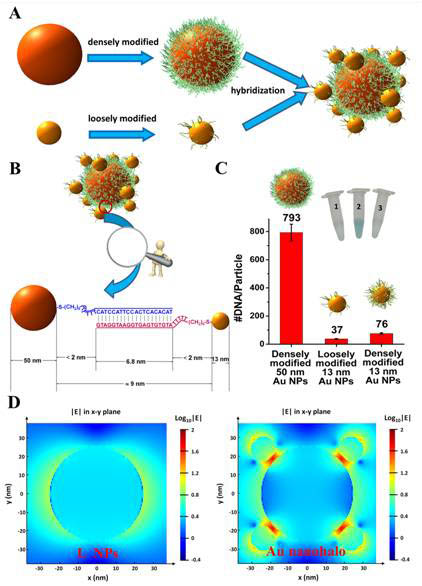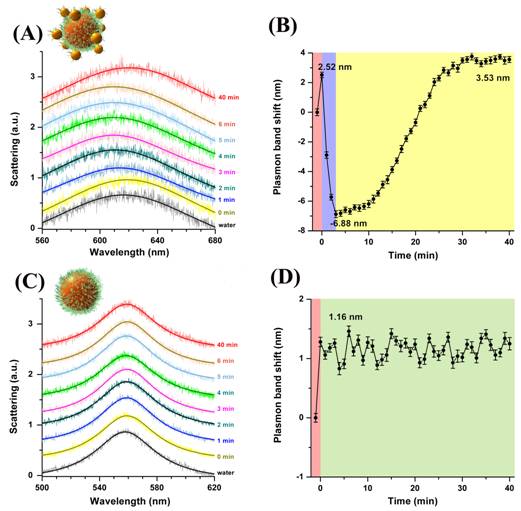

Metal Nanoparticles (NPs) are important catalysts for many chemical transformations due to their size-induced high surface-to-volume ratio and high chemical potential. However, owing to the complexity of heterogeneous reactions, detailed physico- chemical information obtained on heterogeneous catalysts is scarce.
Plasmonic imaging under a dark-field microscope (DFM) holds great promise for single-particle analysis in bioimaging, nanophotonics and nanocatalysis. They designed a DNA-directed programmable assembly strategy to fabricate a halo-like Au nanostructure (nanohalo) that couples plasmonic large gold nanoparticles (L-AuNPs) with catalytically active small AuNPs (S-AuNPs) in a single nanoarchitecture. Catalytic reaction occurring on S-AuNPs changes its permittivity, which results in a significant variation of the plasmonic resonance of the nanohalo. Hence, we can indirectly monitor catalytic reactions on a single nanohalo under DFM, on the basis of which they have obtained quantitative information on both nanocatalysis and catalyst poisoning. This study thus provides a cost-effective means to quantitatively study metal NP-based catalysis at the single-particle level.

